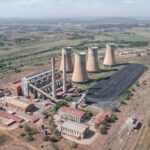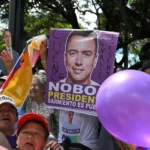Energy News Beat
The Rooiwal and Pretoria West Power Stations, constructed almost 70 years ago when my grandfather moved to Pretoria, are now in need of attention. They were standing idle for almost 10 years and, finally, it appears that the mayor of Pretoria has recognized the urgency and is taking steps to revive these aging coal power stations.
Both plants would require investment to restart at a time when South Africa’s largest banks are limiting lending to coal projects in line with improving their climate credentials.
Rooiwal potentially has 10 years of life left, and “coal is the immediate and rational solution,” Sipho Stuurman, a Tshwane spokesman, said by text message.
“Pretoria West requires a complete overhaul in any event, so there we will look at gas/biomass/waste to energy solutions.”
I find it deeply concerning that our banks are employing ‘climate finance’ to hinder the revival of these power plants. There’s no way around it – this agenda is both racist and colonial, particularly if one considers that roughly two-thirds of South Africa’s youth are currently unemployed, with a majority of them being black. Imposing a decarbonisation agenda on a poor country is beyond callous and insensitive. Richer countries can afford decarbonisation, most of Africa cannot at this stage, because we are still developing and have various other trade-offs to consider.
It begs the question of how South Africa’s banks and business elites genuinely believe that prioritizing ‘saving the planet’ is a more acceptable tradeoff, despite the evident negative impact on the economy of the world’s most coal-dependent country, leading to an increase in poverty.
I’ve expressed this sentiment previously: South Africa grapples with a number of abandoned coal stations, and a pragmatic solution to address load shedding would involve dispatching an engineering team to assess and rectify the issues plaguing them. Depending on the status, they can be brought back within a 10 to 36 month period, and if the original supplier no longer has components then they can be reversed engineered. It is possible.
Coal has been the cornerstone of our industrial economy. South Africa’s industrialization has been deeply intertwined with coal usage, and existing supply chains are well-established. Because of its historical role, coal is simply the least constraint of all 8 major energy sources. Revitalizing these coal stations presents the most expeditious way to mitigate the ongoing problem of rolling blackouts.
It’s important to acknowledge that coal plants, like nuclear, can be operated beyond their original design life. Rather than making excuses, the government and politicians should commit, through legislation, to the restoration of these broken coal stations with the aim to overhaul the entire coal fleet. Only once energy security is established than there should be a thoughtful debate about the broader topic of decarbonization
The Pretoria government, both the DA and ANC administrations, knew that these stations were standing idle. They kept financing the sites, in excess of 10 years, with employees sitting and doing nothing, whilst being paid, at a cost in excess of R100 million per year to the city.
Imagine if our municipalities or Eskom just fixed the broken units?
Had they not walked away from King Coal, then South Africa would not have had loadshedding today.
Hügo’s Newsletter is a reader-supported publication. To receive new posts and support my work, consider becoming a free or paid subscriber. https://hkrugertjie.substack.com/p/pretoria-is-going-back-to-king-coal
The post Pretoria is going back to king coal – Hugo Kruger appeared first on Energy News Beat.








